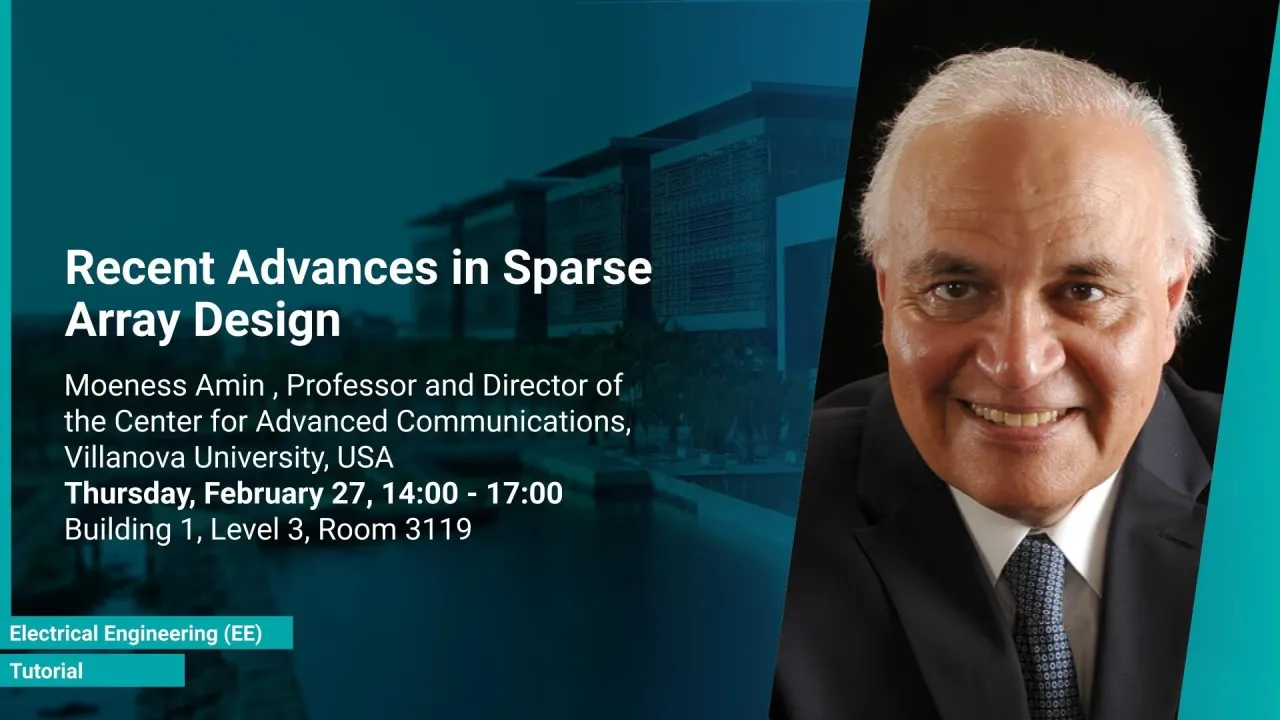
Recent Advances in Sparse Array Design
- Moeness Amin , Professor and Director of the Center for Advanced Communications, Villanova University, USA
B1 L3 R3119
In this tutorial, we review sparse arrays from the coarray perspective that strives for full augment ability, i.e., maximizing the number of spatial autocorrelation lags. In this respect, we discuss sparse array performance for direction finding and also address the passive and active arrays for stationary and moving platforms. We then contrast these configurations with sparse arrays that achieve MaxSINR for both narrowband and wideband sources operating in an interference-active environment. The tutorial also considers both single point source and multiple point sources. We cover the two important cases where the array aperture size is constrained and unconstrained and demonstrate optimum performance in both cases. For the former, and with a limited aperture, we introduce a hybrid design that seeks a full augmentable array which at the same time optimizes beamformer performance. The problem is formulated as a quadratically constraint quadratic program, with the cost function penalized with weighted l1-norm squared of the beamformer weight vector. The wideband problem is tackled by two different approaches, one includes a delay line filter implementation and the other one is the DFT approach.
Overview
Abstract
Sparse array design can potentially achieve comparable performance over uniform array counterparts with fewer sensors. Unlike structured arrays, such as coprime and nested arrays, sparse arrays designed to achieve optimum performance criterion, like maximum signal-to-interference plus noise ratio (MaxSINR), are environmental-dependent and their configurations, as well as their beamformer weights, change with the underlying field of view. In this tutorial, we review sparse arrays from the coarray perspective that strives for full augment ability, i.e., maximizing the number of spatial autocorrelation lags. In this respect, we discuss sparse array performance for direction finding and also address the passive and active arrays for stationary and moving platforms. We then contrast these configurations with sparse arrays that achieve MaxSINR for both narrowband and wideband sources operating in an interference-active environment. The tutorial also considers both single point source and multiple point sources. We cover the two important cases where the array aperture size is constrained and unconstrained and demonstrate optimum performance in both cases. For the former, and with a limited aperture, we introduce a hybrid design that seeks a full augmentable array which at the same time optimizes beamformer performance. The problem is formulated as a quadratically constraint quadratic program, with the cost function penalized with weighted l1-norm squared of the beamformer weight vector. The wideband problem is tackled by two different approaches, one includes a delay line filter implementation and the other one is the DFT approach.
Brief Biography
Moeness Amin received a B.Sc. degree from the Faculty of Engineering, Cairo University in 1976, MSc from King Fahd University of Petroleum and Minerals in 1980, and a Ph.D. degree from the University of Colorado, Boulder, in 1984, all degrees are in electrical engineering. Since 1985, he has been with the Faculty of the Department of Electrical and Computer Engineering, Villanova University, Villanova, PA, USA, where he became the Director of the Center for Advanced Communications, College of Engineering, in 2002. Dr. Amin is a Fellow of the Institute of Electrical and Electronics Engineers (IEEE); Fellow of the International Society of Optical Engineering (SPIE); Fellow of the Institute of Engineering and Technology (IET); and a Fellow of the European Association for Signal Processing (EURASIP). He is the Recipient of the 2017 Fulbright Distinguished Chair in Advanced Science and Technology; Recipient of the 2016 Alexander von Humboldt Research Award; Recipient of the 2016 IET Achievement Medal; Recipient of the 2014 IEEE Signal Processing Society Technical Achievement Award; Recipient of the 2009 Technical Achievement Award from the European Association for Signal Processing; and the Recipient of the 2015 IEEE Aerospace and Electronic Systems Society Warren D White Award for Excellence in Radar Engineering. He is the recipient of the IEEE Third Millennium Medal. Dr. Amin has over 800 journal and conference publications in signal processing theory and applications, covering the areas of Wireless Communications, Radar, Sonar, Satellite Navigations, Ultrasound, Healthcare, and RFID. He is the Editor of three books titled, Through the Wall Radar Imaging, Compressive Sensing for Urban Radar, Radar for Indoor Monitoring, published by CRC Press in 2011, 2014, and 2017, respectively.